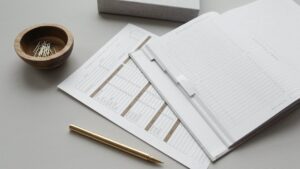Forex and CFD trading are two of the most popular forms of financial trading in the world. Both are commonly used by traders to speculate on the price movement of financial assets such as currencies, stocks, and commodities. In this beginner’s guide, we will explore the basics of Forex and CFD trading, including what they are, how they work, and how to get started.
What is Forex Trading?
Forex, or foreign exchange, is the process of buying and selling different currencies. The aim of Forex trading is to profit from the fluctuations in exchange rates between two currencies. For example, if you believe that the US dollar will appreciate against the Euro, you can buy US dollars with Euros at a certain exchange rate. If the exchange rate then increases, you can sell the US dollars back to Euros at the new exchange rate and make a profit.
Forex trading is typically done through a broker, who provides access to the foreign exchange market. Brokers offer a range of trading platforms, including desktop, web-based, and mobile apps, which allow traders to access the market and execute trades.
What is CFD Trading?
CFD, or contract for difference, is a financial derivative that allows traders to speculate on the price movement of an underlying asset, such as a stock, commodity, or currency pair. CFDs are essentially a contract between the trader and the broker, where the trader agrees to pay the broker the difference between the opening and closing price of the underlying asset.
CFD trading allows traders to profit from both upward and downward price movements of assets, without actually owning the underlying asset. This means that traders can profit from markets that are falling, as well as those that are rising.
How do Forex and CFD Trading Work?
Forex and CFD trading both work on the principle of leverage. This means that traders can control a large amount of money with a small deposit, known as a margin. For example, if a trader wants to buy $10,000 worth of Euros, they may only need to deposit $100 as margin with their broker. This allows them to control a large position in the market, and potentially earn a larger profit.
However, leverage also increases the risk of losses. If the market moves against the trader, they may lose more than their initial deposit, known as a margin call. To manage risk, traders can use stop-loss orders, which automatically close their position if the market moves a certain amount against them.
How to Get Started with Forex and CFD Trading
To get started with Forex and CFD trading, you will need to find a reputable broker. Look for a broker that is regulated by a reputable financial authority, such as the FCA in the UK or the ASIC in Australia. You should also look for a broker that offers a range of trading platforms, educational resources, and customer support.
Once you have chosen a broker, you will need to open a trading account and deposit funds. Most brokers offer a range of account types, including demo accounts, which allow you to practice trading with virtual funds before risking your own money.
Before trading with real money, it is important to develop a trading strategy and risk management plan. This should include a set of rules for entering and exiting trades, as well as guidelines for managing risk and avoiding emotional trading.
Conclusion
Forex and CFD trading can be highly profitable, but also carry a high level of risk. It is important to educate yourself on the basics of trading, develop a trading strategy, and manage risk effectively. By doing so, you can potentially earn a substantial income from financial trading.






